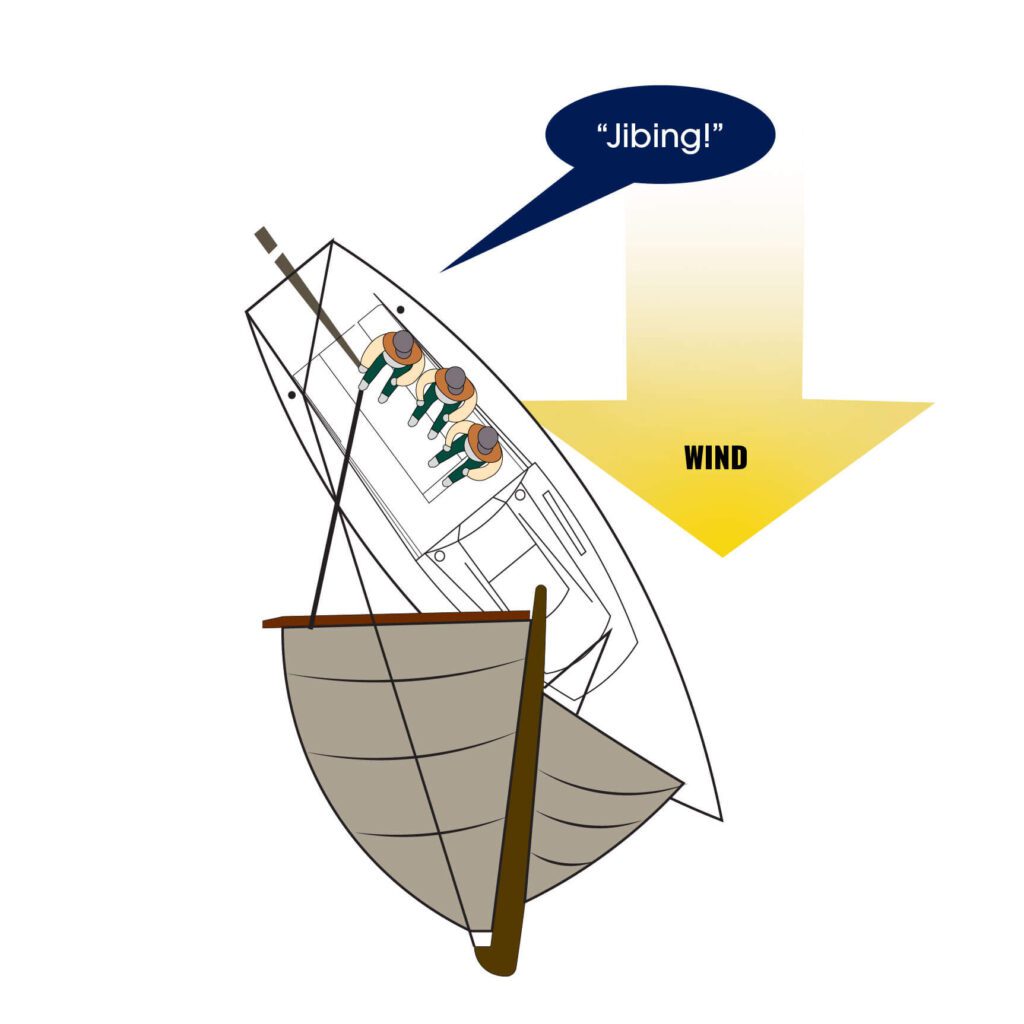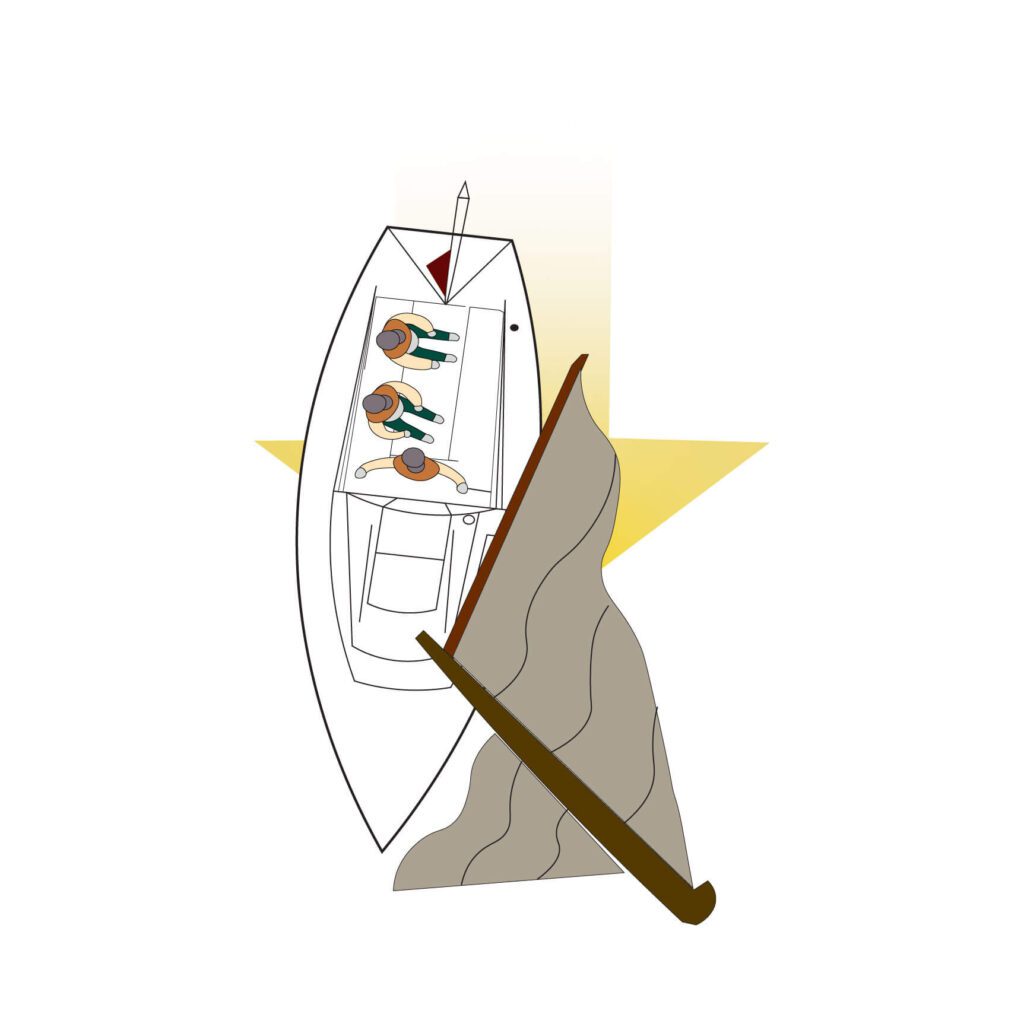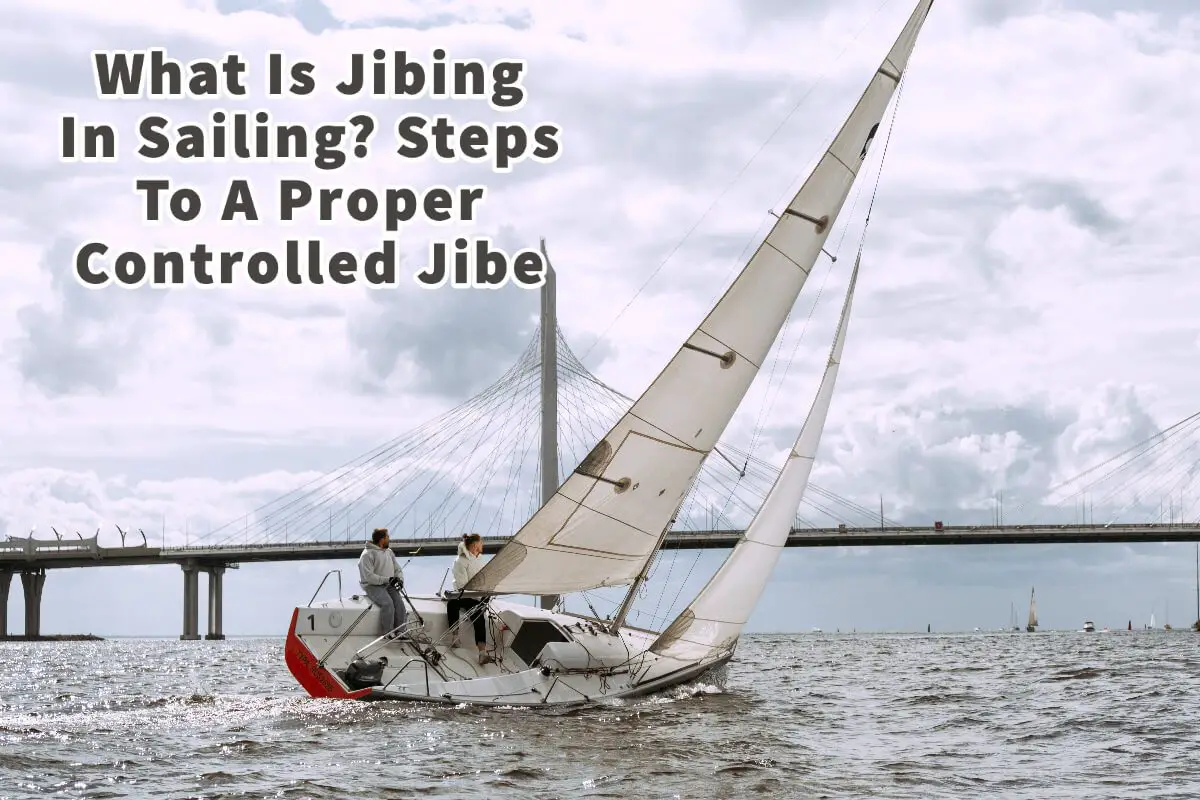Jibing is another basic sailing maneuver that people must master when learning to sail. It is similar to tacking but a little bit different. Both a tack and a jibe will change the direction of your sailboat.
A jibe in sailing is when the boat moves with the stern through the wind. Like any sailing maneuver, when you have a crew, the helmsman or the captain steering the boat needs to adequately communicate with the crew about what is happening so that they know; this is especially true when jibing. If you can not careful, you can do an uncontrolled jibe.
Table of Contents
Jibing In Sailing Defined
A basic maneuver in sailing is known as a jibe. Like a tack, a jibe will change the direction of your sailboat. But unlike a tack where you steer the boat’s bow into the wind, with a jibe, the wind crosses over the back of the stern.
Here are a few things to remember about a jibe:
- Jibe Is Turning Stern Through The Wind- A Jibe maneuver turns the back of the boat or the stern through the wind.
- Changes Boat Direction – Like a tack, the jibe will change the boat’s direction.
- Sails Are Out – At the beginning of the jibe, the sails are let out.
- A Jibe Must Be Controlled – A Jibe can be a forceful maneuver, so it should be a controlled movement when done correctly. This is because the boom will forcibly cross the stern in a jibe, and someone can get hurt. A controlled jibe will minimize the speed of the boom crossing over the boat.
- Jibe Is In Downwind – When you do a jibe, there is a downwind, or the wind is coming from the back of the boat or stern.
- Sailing In A Run Point Of Sail, Wind Can Shift – If you are sailing in a run point of sail, the wind can shift, so be careful if you are on a run point of sail that the wind does not move and you perform an accidental jibe.
Jibe is a basic maneuver in sailing; unlike tacking, you are pushing the stern of the boat through the wind. Many inexperienced sailors may do an uncontrolled jibe, but they can be dangerous as in a jibe, the boom of the boat usually goes over the boat with force, and someone can get hurt.
That is why a jibe is a vital maneuver you should learn to master in sailing.
Steps For A Proper Controlled Jibe
In jibing, you are changing the boat’s direction while passing the stern of the boat through the wind. But like with all sailing maneuvers involving a crew, you must adequately communicate to them what you are doing.
Here are some steps to perform the Jibe sailing maneuver properly:
Step 1 – Prepare To Jibe

The helmsman will check the wind direction and then decides that they need to jibe the boat to change the direction. The helmsman will call out, “Get Ready to Jibe” or “Jibe Ho!.”
The crew will then un cleat the jib sail, and the helmsman or crew will allow the mainsail to luff. When this is done, and the boat is ready to jibe, the crew calls out, “Ready.”
Step 2 – Helmsman Will Bear Away

Once the crew has responded they are ready, the Helmsman will call out “Jibing” to let everyone know they will jibe the boat. The Helmsman will now slowly turn the boat away from the wind or the tiller away from the boom. The crew makes sure the main sail and jib are all eased up.
Step 3 – Turns Stern Through The Wind

The Helmsman now continues to turn the boat through the wind. The stern of the ship is going through the wind, and the jib crosses over to the other side.
Just the boom crosses over. The Helmsman shouts “Jibing” again to let everyone watch out for the boom coming across.
As the main sail starts to cross the center of the boat, the Helmsman will bring the tiller to the center to keep the boat on course.
When the boom has crossed over, and the sail is still luffing, so the boat is not moving, the helmsman and the crew will move to the other side of the boat.
It is also essential that when the helmsman crosses to the other side of the boat, they keep their eyes on the front of the boat. They should move the tiller behind their back so that their eyes are always on the front of the boat.
Step 4 – Continue On the Sailing Course

When the boom crosses over, the crew or helmsman will tighten the main sail as needed and cleat the jib sail in position. The boat is now back on course and going in the right direction.
Learning to do a proper jibe is a fundamental sailing maneuver. Like all sailing, you need to practice it to get it right.
If you are new to sailing, practice your jibe to get it right and understand when you must do a tack or a jibe.
At A Bus On A Dusty Road, we talk about everything about culture, travel, life, sailing, and ex-pat living. We are all about “Living Life As A Global Citizen.” We explore social, cultural, and economic issues and travel.
We would love to have you be part of our community. Sign up for our newsletter to keep up-to-date by clicking here. If you have any questions, you can contact me, Anita, by clicking here.
Listen to our Podcast called Dusty Roads. You can find it on all major podcast platforms. Try out listening to one of our podcasts by clicking here.
Subscribe to our A Bus On A Dusty Road YouTube Channel with great videos and information by clicking here.
Related Questions
What Is The Best Way To Remember The Points Of Sail When Sailing?
A jibe in sailing is when the boat moves with the stern through the wind. In a jibe, the stern will move through the wind. Like any sailing maneuver, when you have a crew, the helmsman or the captain steering the boat needs to adequately communicate with the crew about what is happening so that they know; this is especially true when jibing.
By clicking here, you can discover What Is The Best Way To Remember The Points Of Sail When Sailing?.
What Is The Sailing Term For “No Wind”?
The term calm or calm is used to describe sailing with no wind, or they’re no wind for you to be able to sell your sailboat. In ancient times, the sailors also used the word tied over to indicate that there was no wind, so they were tied over or stuck without being able to sail.
By clicking here, you can discover What Is The Sailing Term For “No Wind”?
What Is “Sailing Into The Wind” Called?
When sailing into the wind, it is called the “No Go Zone” or sometimes the “No Sail Zone.” Some people may also refer to it as being in irons. All of these terms have the same meaning you cannot sail your boat into the wind because your sails cannot get a pull or push momentum to move your boat forward.
By clicking here, you can discover What Is “Sailing Into The Wind” Called?

